GCC strives to reach real estate potential
27 June 2024

The real estate sector across the six states that make up the GCC has not yet achieved its full potential when it comes to attracting foreign investment.
This is best illustrated by the region’s largest economy, Saudi Arabia. The kingdom’s Vision 2030 economic diversification strategy includes ambitious targets to increase homeownership among citizens and attract international investors with its recently introduced Premium Residency Visa. The new visa is designed to open up the market to global investors, and while some gains are starting to be made, the market is still at the start of this journey.
Throughout the GCC, real estate markets have demonstrated a degree of resilience and stability following the Covid-19 pandemic, but challenges remain.
Rising borrowing costs and slow-paced reforms have affected the residential sector in the region, although the impact has not been universal. In Kuwait and Saudi Arabia, real estate sales have declined significantly, whereas in Dubai, sales continue apace.
For commercial real estate, the demand for high-quality, sustainable office spaces is a common trend. Businesses are increasingly favouring high-quality Grade A properties, leading to higher rental rates compared to mid- and low-end offices.
The retail sector has benefited from increased consumer activity, particularly during festive seasons. Malls and mixed-use developments have maintained stable rental rates, although some areas, like strip retail rentals, have seen slight declines. This reflects a broader trend of consumer preferences shifting towards more integrated and experiential shopping environments with a keen focus on entertainment.
Meanwhile, the industrial sector has shown robust demand, driven by manufacturing and logistics. High occupancy rates for large and medium-sized warehouses underline the sector’s resilience.
Bahrain
Bahrain’s property market is performing steadily, driven by strategic homebuyers focusing on mid-range properties, as well as a growing demand for luxury waterfront homes.
The market’s attractiveness has been enhanced by masterplanned developments such as Bahrain Bay and Diyar Al-Muharraq, which have achieved a critical mass that means they are now perceived as thriving communities rather than ongoing construction projects.
While project completions are important for confidence, in its Q1 2024 market report, property consultant Savills warns that key project completions such as Onyx Residences, Al-Nasseem Phase 2 Villas and Wadi Al-Riffa could lead to a short-term dip in capital values due to oversupply.
Any possible fall could reverse recent gains. According to Savills, high-end apartment units registered modest 0.3% quarterly growth, averaging BD832 ($2,207.6) a square metre (sq m), while high-end villas have experienced a 4.5% year-on-year decline, averaging BD583/sq m.
Savills reports that the office sector has remained stable, with businesses favouring high-quality Grade A properties, leading to higher rental rates compared to mid- and low-end offices. Demand for Leed-certified spaces and co-working environments is increasing, reflecting environmental, social and governance (ESG) commitments. Grade A properties face mild value corrections due to new developments.
Retail benefited from festive mall footfalls, keeping rental rates stable for malls and mixed-use developments, while strip retail rentals dropped slightly.
Kuwait
The Kuwait real estate sector continued its dismal performance in 2023 due to rising borrowing costs and the slow pace of ongoing reforms. The volume of transactions saw a significant downturn, according to a report by Marmore, a fully owned research subsidiary of Kuwait Financial Centre, Markaz.
Real estate sales dropped to KD2.1bn ($6.7bn) in the first nine months of 2023, reflecting a 26% year-on-year decline from KD2.8bn ($9.1bn). This downturn has affected all segments of the market.
In the residential sector, sales fell by 26% in Q3 2023, totalling KD1.1bn ($3.6bn), down from KD1.4bn ($4.7bn) in the same period of the previous year. The number of transactions also declined by 34% year-on-year. High house prices and borrowing costs have kept demand muted.
The residential rental segment also decreased by 20% year-on-year, reaching KD666m ($2.2bn) in Q3 2023, down from KD831m ($2.7bn) in Q3 2022.
The commercial sector experienced a 37% year-on-year drop in sales, to KD321m ($1bn) in 2023, compared to KD511m ($1.6bn) in 2022. The number of transactions in this sector declined by 35% year-on-year.
In July last year, Kuwait’s National Assembly approved the Housing Development Law and amendments to the Housing and Real Estate Affairs Law that enables private sector involvement – including foreign investment – in developing cities and residential areas, and aims to prevent land monopolies. These measures could positively influence the country’s real estate market this year.
Oman
After a couple of tough years during and immediately following the Covid-19 pandemic, Oman is again capitalising on its real estate potential, with new projects attracting interest from residents and investors.
The sultanate’s real estate market in 2024 is buoyed by a combination of increasing expatriate populations, attractive pricing and favourable government policies.
A recent report by property consultancy Cavendish Maxwell highlights the contribution of the government’s strategic reforms and investments in infrastructure as critical drivers for the growth of the real estate sector in the country. These have included the easing of foreign ownership restrictions, the introduction of new real estate laws and enhanced regulatory frameworks that have created a more transparent and attractive market for investors.
Longer term, Muscat has set targets for the economy that will support the real estate sector. Under Oman’s Vision 2040 plan, the government aims to attract 11 million visitors annually by 2040, which will boost the tourism industry. Investments in economic zones, renewable energy, manufacturing and tourism projects will contribute to the growth of the construction industry, including the real estate sector.
Oman is developing new projects in response to the long-term opportunities that this growth will create. These include the Sultan Haitham City project to the west of Muscat and a masterplanned mountain development on Jebel Akhdar, launched earlier this year.
Qatar
Following a period of fluctuation around the 2022 Fifa World Cup, Qatar’s real estate market is showing signs of stability, according to Cushman & Wakefield. The number of real estate sales transactions surged by 17.3% in January and February this year compared to the same period in 2023, with an overall value increase of 4.1%.
The declining trend in residential sales transactions seen in 2023, when a drop of 16.2% was recorded compared to 2022, has been reversed in the first two months of this year. Residential sales transactions have increased by 30% compared to the same period last year, reflecting a significant 46% rise in transaction value.
In the rental segment, the early months of 2024 have highlighted a growing disparity between newly constructed residential projects and those built over a decade ago. Tenants are increasingly drawn to modern, well-managed serviced appartments.
Office leasing activity declined in the first quarter of 2024, following a good run at the end of 2023. Over the past six months, more than 70,000 sq m of Grade A office space has been reserved, leading to a decrease in availability in areas including Lusail and Msheireb.
In the first quarter of 2024, hotel room supply in Qatar reached 38,000, which marks a 45% increase in supply over the past five years.
Despite initial concerns of oversupply, Qatar’s hotel industry has experienced a significant boost due to a rise in tourist arrivals since January. Hotel occupancy rates also soared to 84% in January and 85% in February, reaching their highest levels since 2015.
Saudi Arabia
Saudi Arabia’s real estate sector is moving into a new phase as it aims to build on its recent successes and targets foreign investment more proactively.
Real estate forms a key part of the kingdom’s Vision 2030, which aims to increase homeownership by Saudi nationals to 70% by 2030, from 63.7% in 2023.
The residential real estate market in Saudi Arabia is experiencing robust demand, especially in the major cities of Riyadh, Jeddah and Dammam. In Q1 2024, Riyadh recorded a 77% year-on-year increase in sales transactions, while Jeddah saw a 92.9% rise. This surge in activity underscores the strong appetite for residential properties in these urban centres.
Despite this growth, the market faces challenges such as affordability and a shortage of appropriately priced homes.
Historically, foreign ownership restrictions have limited international investment in Saudi real estate. However, the new visa scheme signifies a pivotal shift, encouraging a diverse pool of global talents and investors to contribute to the local economy. This move is expected to drive up property values in premium segments and spur the development of luxury real estate projects.
“The real estate market in Saudi Arabia has long anticipated a change in the foreign ownership rules. A significant milestone was reached at the start of the year when a raft of new Premium Residency Visa options were unveiled, including a real estate ownership-linked visa, which is likely to pave the way for international buyers and investors,” says real estate consultancy Knight Frank in its recent Destination Saudi Report.
This move is expected to create supplemental demand from foreign investors that have been waiting for changes in the kingdom’s ownership laws.
Saudi Arabia’s new Premium Residency Visas include a real estate ownership-linked option that is designed to attract foreign investment by allowing non-Saudis to own property worth at least SR4m ($1.1m).
This policy shift marks a strategic opening up of the market to international investors and affluent expatriates and could potentially boost high-value transactions and increase the demand for luxury residential properties in the kingdom.
One of the early focus areas for new investment inflows could be the holy cities of Mecca and Medina.
The demand for real estate in Saudi Arabia is also being driven by high-net-worth individuals (HNWI), particularly those from Muslim-majority countries. Surveys indicate that 82% of international HNWI buyers are keen to own real estate in the kingdom, with significant interest in the two holy cities.
These buyers view Saudi Arabia as a good investment opportunity, with cultural and religious reasons also playing a crucial role in their decision-making, Knight Frank says in its Destination Saudi report.
UAE
The UAE’s real estate market started 2024 on a robust note, showing increased activity levels across all sectors during the first quarter, according to the latest report by property consultant CBRE.
The report shows that the total transaction volumes in Dubai’s residential market reached 35,310 in Q1 2024. This is the highest total ever recorded in the first quarter of the year, marking an increase of 20.5% from the previous year.
Off-plan transactions in Dubai also increased by 23.9%, whereas secondary market transactions rose by 15.2% during the same period.
The CBRE report also outlined that in the first quarter of 2024, Dubai’s residential market witnessed an increase in average prices of 20.7% by March 2024 compared to the previous year.
In Abu Dhabi, average apartment prices rose by 4.3% and villa prices saw an increase of 2.3% during the same period.
In the commercial sector, the total number of rental registrations in the office sector increased to 46,850, a hike of 35.8% compared to the previous year, according to data from Dubai Land Department.
In Abu Dhabi, an increased activity level in the commercial space sector has taken the occupancy rate to 94% in the first quarter of 2024, up from the 92.5% registered in the same period last year. The increased occupancy levels have led to a growth in rentals, where Prime, Grade A and Grade B rents posted average growth rates of 6.6%, 3.4% and 9.7%, respectively.
The hospitality sector also noted improvement. The number of international visitors to Dubai totalled 5.2 million in the period from January to March 2024, up by 10.2% from a year earlier. The total number of hotel guests in Abu Dhabi stood at 1.3 million, a growth of 22% compared to Q1 2023.
In the retail sector, leasing activity lagged in Abu Dhabi as 7,779 rental contracts were registered in the first quarter of 2024, marking a decline of 8.1% compared to Q1 2023. Dubai witnessed a marginal increase of 0.2% in retail registrations compared to same period last year, recording a total of 23,139.
Finally, the UAE’s industrial and logistics sector also recorded positive leasing activity, with the total number of rental registrations in Abu Dhabi and Dubai increasing by 4.7% and 3.2%, respectively, compared to the same period last year.
Additional reporting by Yasir Iqbal
Exclusive from Meed
-
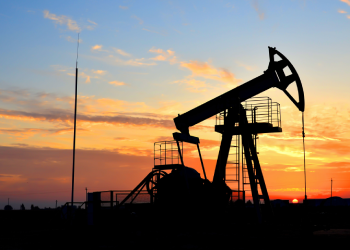 SLB passes evaluation for Kuwait upstream project
SLB passes evaluation for Kuwait upstream project12 December 2025
-
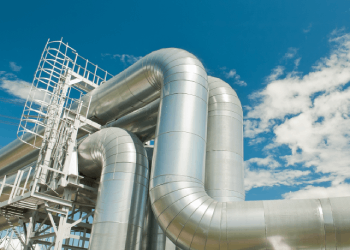 Dana Gas makes onshore discovery in Egypt
Dana Gas makes onshore discovery in Egypt12 December 2025
-
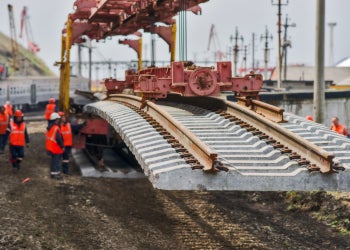 SAR to tender new phosphate rail track section in January
SAR to tender new phosphate rail track section in January12 December 2025
-
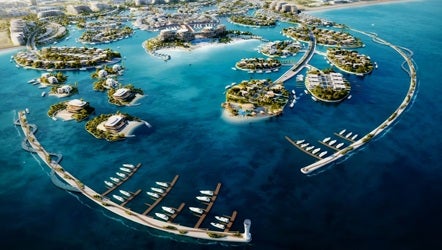 Dar Global to develop $4.2bn Oman mixed-use project
Dar Global to develop $4.2bn Oman mixed-use project10 December 2025
-
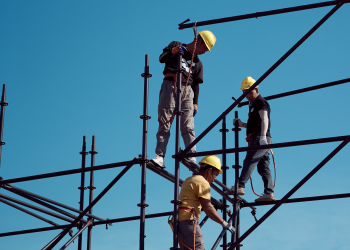 Contract award nears for Saudi Defence Ministry headquarters
Contract award nears for Saudi Defence Ministry headquarters10 December 2025
All of this is only 1% of what MEED.com has to offer
Subscribe now and unlock all the 153,671 articles on MEED.com
- All the latest news, data, and market intelligence across MENA at your fingerprints
- First-hand updates and inside information on projects, clients and competitors that matter to you
- 20 years' archive of information, data, and news for you to access at your convenience
- Strategize to succeed and minimise risks with timely analysis of current and future market trends

Related Articles
-
 SLB passes evaluation for Kuwait upstream project
SLB passes evaluation for Kuwait upstream project12 December 2025
The US-based oilfield services company SLB, formerly Schlumberger, has passed the technical bid evaluation for a major project to develop Kuwait’s Mutriba oil field.
The Houston-headquartered company was the only bidder to pass the technical evaluation for the Mutriba integrated project management (IPM) contract.
The minimum passing technical evaluation score was 75%.
The full list of bidders was:
- SLB (US): 97%
- Halliburton (US): 72%
- Weatherford (US): 61.5%
The decision was finalised at a meeting of the Higher Purchase Committee (HPC) of state-owned Kuwait Petroleum Corporation (KPC) on 20 November 2025.
According to a document published earlier this year by KOC, the IPM tender for the Mutriba field aims to “accelerate production through a comprehensive study that includes economic feasibility evaluation, well planning and long-term sustainability strategies”.
The field was originally discovered in 2009.
Commercial production from the Mutriba field started earlier this year, on 15 June, after several wells were connected to production facilities.
The field is located in a relatively undeveloped area in northwest Kuwait and spans more than 230 square kilometres.
The oil at the Mutriba field has unusually high hydrogen sulfide content, which can be as much as 40%.
This presents operational challenges requiring specialised technologies and safety measures.
In order to start producing oil at the field, KOC deployed multiphase pumps to increase hydrocarbon pressure and enable transportation to the nearest Jurassic production facilities in north Kuwait.
The company also built long-distance pipelines stretching 50 to 70 kilometres, using high-grade corrosion-resistant materials engineered to withstand the high hydrogen sulfide levels and ensure long-term reliability.
KOC also commissioned the Mutriba long-term testing facility in northwest Kuwait, with a nameplate capacity of around 5,000 barrels of oil a day (b/d) and 5 million standard cubic feet of gas a day (mmscf/d).
Once this facility was commissioned, production stabilised at 5,000 b/d and 7 mmscf/d.
In documents published earlier this year, KOC said that starting production from the field had “laid a solid foundation” for the IPM contract by generating essential reservoir and surface data that will guide future development.
Future output from the field is expected to range between 80,000 and 120,000 b/d, in addition to approximately 150 mmscf/d of gas.
https://image.digitalinsightresearch.in/uploads/NewsArticle/15235579/main.png -
 Dana Gas makes onshore discovery in Egypt
Dana Gas makes onshore discovery in Egypt12 December 2025
Register for MEED’s 14-day trial access
UAE-based Dana Gas has made an onshore gas discovery in Egypt’s Nile Delta area, according to a statement from the company.
The discovery was made by the drilling of the North El-Basant 1 exploratory well, and initial well results indicate estimated reserves of 15-25 billion cubic feet of gas.
Production from the reserve is expected to exceed 8 million cubic feet a day (cf/d) once the well is connected to the national network.
The North El-Basant 1 exploratory well was the fourth well in a campaign of 11 development and exploration wells.
The campaign is being executed as part of the company’s $100m investment programme to support domestic gas production, increase reserves and meet growing energy demand.
Earlier this year, Dana Gas completed the drilling of three wells, adding 10 million cf/d.
The programme is expected to increase long-term production and add approximately 80 billion cubic feet of recoverable gas reserves, according to Dana Gas.
Dana Gas expects to start drilling the fifth well in the programme, the Daffodil exploration well, in the first week of January 2026.
Richard Hall, the chief executive of Dana Gas, said: “The latest drilling success reinforces the value of our investment programme in Egypt and highlights the significant remaining potential within the Nile Delta.”
He added: “By increasing local gas production, the programme will help reduce Egypt’s reliance on imported liquefied natural gas (LNG) and fuel oil and is expected to generate more than $1bn in savings for the national economy over time.”
Previously, Dana Gas signed an agreement with state-owned Egyptian Natural Gas Holding Company (EGas) to secure additional acreage under improved fiscal terms, and to accelerate drilling activity.
Hall said: “We appreciate the strong cooperation from EGas and the ministry, and we remain committed to delivering the majority of our planned programme next year.
“Regular and timely payments from our partners are crucial to sustaining our investment programme in Egypt."
In November, a new gas discovery was made in Egypt’s Western Desert region by Khalda Petroleum Company, a joint venture of state-owned Egyptian General Petroleum Corporation and US-headquartered Apache Corporation.
Egypt also started gas production from the West Burullus field in the Mediterranean Sea, after connecting the first wells to the national gas grid.
The country is currently pushing to increase gas production in order to meet domestic demand and reduce its import bill.
https://image.digitalinsightresearch.in/uploads/NewsArticle/15235552/main.png -
 SAR to tender new phosphate rail track section in January
SAR to tender new phosphate rail track section in January12 December 2025

Register for MEED’s 14-day trial access
Saudi Arabian Railways (SAR) is expected to float another multibillion-riyal tender to double the tracks on the existing phosphate railway network connecting the Waad Al-Shamal mines to Ras Al-Khair in the Eastern Province.
MEED understands that the new tender – covering the second section of the track-doubling works, spanning more than 150 kilometres (km) – will be issued in January.
The new tender follows SAR’s issuance of the tender for the project's first phase in November, which spans about 100km from the AZ1/Nariyah Yard to Ras Al-Khair.
The scope includes track doubling, alignment modifications, new utility bridges, culvert widening and hydrological structures, as well as the conversion of the AZ1 siding into a mainline track.
The scope also covers support for signalling and telecommunications systems.
The tender notice was issued in late November, with a bid submission deadline of 20 January 2026.
Switzerland-based engineering firm ARX is the project consultant.
MEED understands that these two packages are the first of four that SAR is expected to tender for the phosphate railway line.
The other packages expected to be tendered shortly include the depot and the systems package.
In 2023, MEED reported that SAR was planning two projects to increase its freight capacity, including an estimated SR4.2bn ($1.1bn) project to install a second track along the North Train Freight Line and construct three new freight yards.
Formerly known as the North-South Railway, the North Train is a 1,550km-long freight line running from the phosphate and bauxite mines in the far north of the kingdom to the Al-Baithah junction. There, it diverges into a line southward to Riyadh and a second line running east to downstream fertiliser production and alumina refining facilities at Ras Al-Khair on the Gulf coast.
Adding a second track and the freight yards will significantly increase the network’s cargo-carrying capacity and facilitate increased industrial production. Project implementation is expected to take four years.
State-owned SAR is also considering increasing the localisation of railway materials and equipment, including the construction of a cement sleeper manufacturing facility.
https://image.digitalinsightresearch.in/uploads/NewsArticle/15229624/main.jpg -
 Dar Global to develop $4.2bn Oman mixed-use project
Dar Global to develop $4.2bn Oman mixed-use project10 December 2025
Register for MEED’s 14-day trial access
Saudi Arabia-headquartered real estate developer Dar Global has announced that it will develop a mixed-use project in Muscat at an estimated investment of RO1.6bn ($4.2bn).
Dar Global will co-develop the Muscat Marine, Art & Digital District project with Oman's Art District Real Estate Development Company.
The project will cover an area of over 1.5 million square metres (sq m) and will be developed in several phases over 12 years.
The development will comprise a mix of residential communities, cultural venues, marinas, retail spaces, finance and business parks and hotels.
Dar Global, a subsidiary of Dar Al-Arkan, was one of the first Saudi brands to list on the London Stock Exchange.
Dar Al-Arkan established Dar Global in 2017 to focus on developing projects in the Middle East and Europe, including in Dubai, Qatar, Oman, London and the Costa del Sol in southern Spain.
Dar Global has $12bn-worth of projects under development in six countries: the UAE, Oman, Qatar, Saudi Arabia, the UK and Spain.
It completed three developments – the Urban Oasis and Da Vinci towers in Dubai and the Sidra gated community in Bosnia – in 2023.
The company collaborates with global brands including Missoni, W Hotels, Versace, Elie Saab, Automobili Pagani and Automobili Lamborghini.
In Oman, Dar Global is also developing the Aida project. In May, it awarded a contract to develop the villas and apartments as part of the project.
According to an official statement, the construction works are expected to start immediately and the project is slated for completion in 2026.
The main contract was awarded to local firm Al-Adrak Trading & Contracting.
The latest announcement follows the awarding of contracts in June last year for the development of the first phase of the Aida project.
The Aida project is being developed as a joint venture with Omran Group and the first phase is expected to be completed in 2027.
UK analytics firm GlobalData forecasts that the Omani construction industry will expand at an annual average growth rate of 4.2% in 2025-28. Growth in the country will be supported by rising government investments in renewable energy, the transport infrastructure and the housing sector, all as part of Oman's Vision 2040 strategy.
Growth during the forecast period will also be supported by increasing hospitality sector investments, with the government planning to invest RO11.9bn ($31bn) in tourism development projects by 2040 and supporting the construction of several hospitality projects.
https://image.digitalinsightresearch.in/uploads/NewsArticle/15222694/main.jpg -
 Contract award nears for Saudi Defence Ministry headquarters
Contract award nears for Saudi Defence Ministry headquarters10 December 2025

Saudi Arabia’s Defence Ministry (MoD) is preparing to award the contract to build a new headquarters building, as part of its P-563 programme in Riyadh.
MEED understands that bid evaluation has reached advanced stages and the contract award is imminent.
The MoD issued the tender in April. The commercial bids were submitted in September, as MEED reported.
Located to the northwest of Riyadh, the P-563 programme includes the development of facilities and infrastructure to support the MoD’s broader initiatives under the kingdom’s Vision 2030 strategy.
It covers the construction of:
- A new military city featuring the MoD headquarters, support and logistics facilities, a residential and commercial community and space for future command centres
- A National Defence University with a library, conference centre and academic buildings
- A self-sustaining Joint Forces Command compound located approximately 50 kilometres from the military city
The budget for the entire programme is expected to be $10bn-$12bn.
In September 2023, MEED reported that Spain-headquartered Typsa had won two contracts for the project.
The first contract, worth $11.4m, included data management, geographic information systems management, geotechnical reporting and the preparation of the phase one final traffic report. The contract duration was 270 days from the notice to proceed.
The second contract, valued at $10.8m, involved preparing four conceptual masterplans for the P-563 site. It was set to last 255 days from the notice to proceed.
These followed a $290m consultancy contract awarded to Typsa in March of the same year. The single-award task order covered a three-year base period, with an optional two-year extension.
Typsa’s scope of work included programme management planning, communications, change and quality management and cost and schedule tracking.
It also included design requirements, codes, standards and submission requirements, programme guidance, study integration, risk analysis and management, design reviews and a programme-of-work breakdown plan.
 READ THE DECEMBER 2025 MEED BUSINESS REVIEW – click here to view PDF
READ THE DECEMBER 2025 MEED BUSINESS REVIEW – click here to view PDFProspects widen as Middle East rail projects are delivered; India’s L&T storms up MEED’s EPC contractor ranking; Manama balances growth with fiscal challenges
Distributed to senior decision-makers in the region and around the world, the December 2025 edition of MEED Business Review includes:
> AGENDA 1: Regional rail construction surges ahead> INDUSTRY REPORT 1: Larsen & Toubro climbs EPC contractor ranking> INDUSTRY REPORT 2: Chinese firms expand oil and gas presence> CONSTRUCTION: Aramco Stadium races towards completion> RENEWABLES: UAE moves ahead with $6bn solar and storage project> INTERVIEW: Engie pivots towards renewables projects> BAHRAIN MARKET FOCUS: Manama pursues reform amid strainTo see previous issues of MEED Business Review, please click herehttps://image.digitalinsightresearch.in/uploads/NewsArticle/15222401/main.gif



